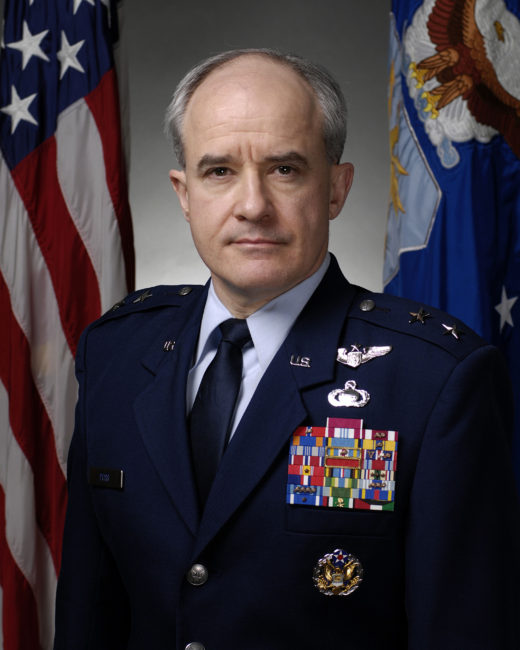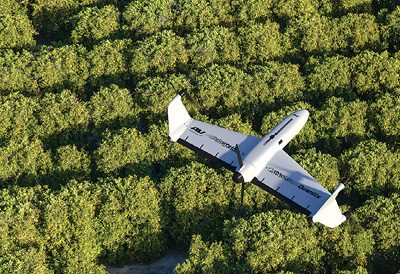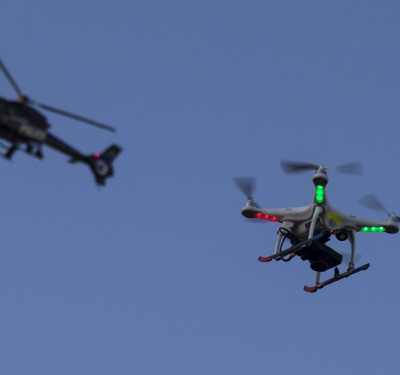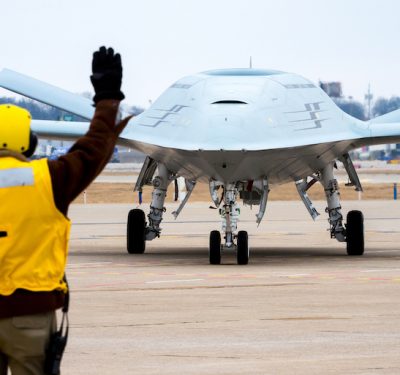
Multiple sources tell me that our drones have been held hostage by our own FBI, which begs the question: “Who does hostage negotiations when you’re held hostage by the FBI?” In this case, it depends on whether we want to negotiate or just meet their demands. The Department of Homeland Security is refusing to coordinate on the new Micro UAS and Operations Over People rules until the FAA requires a method to “electronically identify” drones in flight as part of the rules. I say we drop the negotiations and comply because this demand makes sense. Electronic identification is something the FAA should have insisted upon from the very beginning in Part 107. I know the FAA has been under a lot of pressure to cut red tape and avoid over-regulating the drone industry, but this omission is one that put everyone—manned air traffic, people on the ground, our leaders, our critical infrastructure—at greater risk because we don’t have a way for either air traffic management or law enforcement to tell who is flying what drone in our National Airspace System (NAS). It looks like the FAA is now moving ahead on the issue; the Administrator announced an Electronic ID Aviation Rulemaking Committee at the FAA UAS Symposium in March.
How should the FAA comply with this demand? I hope they think it through and devise rules that address the needs of safety, security, air traffic management, law enforcement and drone detect and avoid. It would be easy to panic and rush out a solution that just addresses law enforcement’s need to ID drones, but a hasty solution could make our cyber security problem worse, plus miss an opportunity to make drones safer and more integrated into our NAS.
The good news, to quote FAA UAS Program Manager Earl Lawrence’s recent testimony, is that “we have several viable systems (for electronic ID), we just need to pick the right one.” Mr. Lawrence is correct—we do have several viable systems, but do they all address the needs of safety, security, air traffic management, law enforcement and DAA? If we look at the coordinated problem from this perspective, the field of potential solutions narrows. The most basic requirement for electronic ID is to identify the serial number of a drone in flight. With just a serial number, law enforcement could at least trace the owner to take action. However, I don’t think that’s enough. Electronic ID should also yield the “N-number” of the remote pilot and indicate if this drone is operating under any Certificate of Authorizations, waivers to Part 107, or any other existing or future rule. This will not only make it easier to identify pilots of rogue drones, but advise law enforcement if the operator is operating legally. Hence, I’d strongly advocate for an electronic ID integrated into NASA’s Unmanned Traffic Management system. This would provide all the information law enforcement needs to make an enforcement decision, plus it would make the entire National Airspace System safer because drones, their remote pilots and their locations would be fully identified as authorized users to appropriate entities.
As I see it, the viable technical solutions are: the Automatic Dependent Surveillance-Broadcast (ADS-B), an LTE (i.e., cell phone) solution, radio beacon/transponder, WiFi broadcast, or an RF ID tag. Let’s look at each from the aspect of safety, security, air traffic management, law enforcement and DAA.
ADS-B: I’ll have to admit, ADS-B is my favorite solution. It’s the safest because ‘ADS-B Out’, which broadcasts an aircraft’s GPS position constantly, is already mandatory equipment for manned aircraft by 2020. Similarly equipped aircraft can receive ADS-B broadcasts directly as long as they’re in line of sight of each other. ‘ADS-B In’ adds an additional layer of safety because it receives the Traffic Information Service-Broadcast (TIS-B). TIS-B broadcasts FAA radar traffic directly and re-broadcasts ADS-B Out from signals it receives from a nation-wide network of receivers. An aircraft equipped with an ADS-B In receiver can therefore see all ADS-B compliant traffic, whether the other aircraft are in their line of sight or not. ADS-B is also protected from radio frequency interference because it uses aviation-protected spectrum. ADS-B can provide very secure identification if paired with either a read-only identity or, ideally, with a certificate based ID system like AirMap’s recently proposed Drone ID. ADS-B neatly solves problems with air traffic integration because all FAA air traffic systems are compatible with ADS-B. It also fits well with law enforcement because enforcers can either directly receive ADS-B broadcasts via inexpensive receivers or simply see ADS-B traffic via the internet. Finally, ADS-B helps tremendously with DAA. Even if a drone goes “lost link,” it could still avoid ADS-B compliant traffic using its on-board receiver. The problem with ADS-B is spectrum bandwidth saturation. Although the FAA hasn’t yet conducted extensive research on the subject, in theory, several hundred drones all broadcasting on ADS-B in the same area could overload the system. I think the FAA should research this theory thoroughly before saying “no” to ADS-B. For example, they should see if reducing the broadcast power on ADS-B Out from 50 watts to something more appropriate for small drones, like 5 watts, solves the problem. They should see if reducing the polling rate for drone ADS-B Out reduces saturation by not constantantly broadcasting their position. Both efforts could substantially reduce saturation.
LTE: This is my favorite. I don’t score it as high as ADS-B for safety because LTE isn’t aviation-standard equipment nor does it operate on aviation-protected spectrum, so interference is a potential problem. LTE security is better than ADS-B because cell phone companies have decades of experience with cellular security and LTE can easily use certificate or SIM card-based ID. LTE also doesn’t currently directly interface with air traffic control systems like ADS-B does. There are, however, work arounds to these problems. NASA’s Unmanned Traffic System (UTM) embraces Internet connectivity as a core function. Unlike manned aircraft that must rely solely on RF-based systems to exchange information, remote pilots and unmanned traffic managers can use Internet connectivity to relay and receive track data from both ADS-B and LTE connected drones. UTM can easily rebroadcast select drone LTE tracks via TIS-B to ADS-B In equipped aircraft if algorithms decide drones get too close to manned aircraft, or to each other. LTE works well for law enforcement because they can either interrogate LTE drones directly or use an internet solution for tracking. LTE works well for DAA as long at the unmanned aerial system (UAS) maintains LTE connectivity to receive tracks from UTM. The problem with LTE is that a drone that loses its LTE link is blind and can’t see traffic around it, whereas an ADS-B drone could perform DAA autonomously even without a command link. An LTE only solution also puts low flying manned aircraft (primarily general aviation aircraft and particularly helicopters) at much greater risk because they fly with ADS-B only and don’t have LTE connectivity to see drone traffic.
RADIO: The “probably not a good idea” zone starts with RF beacons. Making an RF beacon is dead easy. All you need is a GPS feed and a broadcast frequency. And there’s the problem—where do we find uncongested, available RF spectrum these days? It’s not a problem in some countries; the United Arab Emirates has long protected spectrum for falconry beacons and will use them for their drones. It’s a BIG problem in the U.S. Add to that all the drawbacks of using non-standard aviation equipment and safety concerns with unprotected spectrum and you end up asking why you’d want an RF beacon when either ADS-B or LTE accomplish the same job with widely used equipment operating in better protected spectrum.
WiFi: This goes further into the “not a good idea” zone. True, WiFi equipment is ubiquitous and spectrum is available, but it’s VERY crowded spectrum with tightly regulated power output requirements. I’d have to see the studies saying WiFi power output allows enough range to be a viable electronic drone ID before I could recommend WiFi.
RFID TAGS: These are in the “no” category. They’re cheap and would be easy for law enforcement to interrogate, but just don’t have the power output or protected spectrum to be a viable solution. We need something with the power to easily connect to UTM and that’s just not RFID.
If all these solutions have problems, what do we do? I think we’ll end up with a mixed ADS-B/LTE solution. I think ADS-B Out will be mandatory for drones flown beyond line of sight or in controlled airspace. This will be relatively few drones and ADS-B saturation shouldn’t be a problem. For low altitude drones flown within Part 107 rules, I think a hybrid LTE/ADS-B In solution is best. Drones could use LTE to broadcast their ID and position to UTM and then receive positions of other aircraft in the area via ADS-B In and TIS-B. This hybrid solution wouldn’t saturate ADS-B frequencies and would provide DAA data to drones even if they lost their LTE connectivity. The only downside is this solution relies on all manned aircraft having ADS-B In to receive TIS-B to view LTE equipped drone positions. Only ADS-B Out is mandatory for manned aircraft, not ADS-B In. However, I think manned aircraft with higher risk of low altitude drone collision (helicopters, crop dusters, etc.) will see the benefit and rapidly equip with ADS-B.
I have no doubt the Electronic ID ARC will come up with even better ideas. I just hope they look at the big picture as they make inputs to the FAA. Please come up with something that’s secure, such as AirMap’s Drone ID, that makes best use of existing systems, like ADS-B, and yields a fully integrated solution that works with UTM.
This is definitely the one case where we should dispense with negotiations and just do what the hostage-takers want. They are right!






